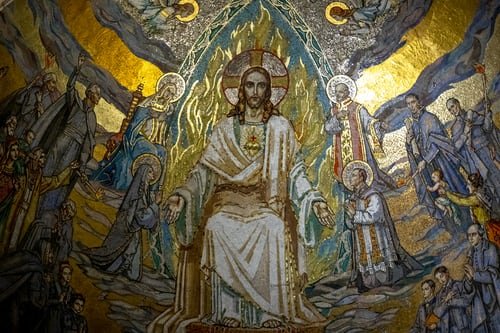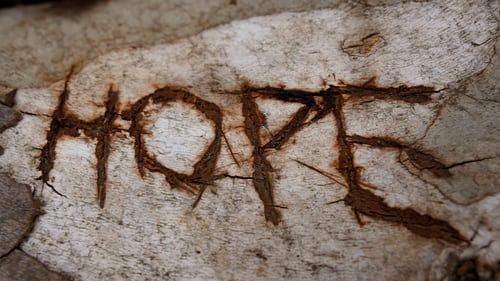Welcome to the ancient world of heathenry, a modern pagan path that celebrates the spiritual beliefs, rituals, and traditions of our ancestors. From the gods and goddesses to the veneration of nature and the ancestors, heathenry offers a unique perspective on spirituality that appeals to many. In this article, we will explore the fascinating history and beliefs of heathenry and how it differs from other pagan paths. Whether you are a heathen or simply curious to learn more, read on to discover the fascinating world of this ancient belief system.
The history and origins of heathenry

Heathenry, also known as Germanic paganism or simply heathenism, is an ancient spiritual belief and pagan religion that has its roots in the indigenous cultures of Northern Europe. It was practiced by the pre-Christian peoples of modern-day Scandinavia, Germany, and Britain, among others, and has since experienced a resurgence in modern times.
Heathenry’s origins can be traced back to the bronze and early Iron Ages, where societies were organized around farmsteads and villages and were heavily influenced by nature and their environment. The people who practiced heathenry believed in a complex and diverse pantheon of gods and goddesses who were associated with nature, war, death, fertility, and wisdom, among other things. Worship and rituals centered around these deities, as well as ancestors who were believed to continue to influence the living world.

During the Viking Age (793-1066 CE), heathenry became more codified and organized, with the establishment of important regional and pan-Nordic cults. These cults focused on the worship of certain deities and were often marked by large-scale feasts, ceremonies, and sacrifices. Despite the rise of Christianity throughout Europe in the Middle Ages, many people in rural and remote areas continued to practice heathenry until the onset of industrialization and urbanization in the nineteenth and twentieth centuries.
Heathenry experienced a revival in the late-nineteenth and early-twentieth centuries, thanks in part to nationalist and romantic movements across Europe. These movements emphasized the importance of cultural identity, traditional values, and the preservation and celebration of one’s heritage. With the growth of the internet and social media in recent decades, heathenry has become a more visible and dynamic community that is constantly evolving and adapting to the modern world.
Key takeaways:
- Heathenry has its origins in the indigenous cultures of Northern Europe and has been practiced by pre-Christian peoples for centuries.
- Heathenry revolves around the worship of a pantheon of gods, goddesses, and ancestors who are associated with various aspects of nature, war, death, fertility, and wisdom.
- Despite the rise of Christianity in the Middle Ages, many people continued to practice heathenry until the onset of industrialization and urbanization in the nineteenth and twentieth centuries.
- Heathenry has experienced a resurgence in modern times, thanks in part to nationalist and romantic movements and the growth of the internet and social media.
Key beliefs and practices of heathenry
Heathenry is an ancient spiritual belief, also known as paganism, that originated in Northern Europe. The followers of this religion worship a pantheon of gods and goddesses, as well as ancestor spirits.
The key beliefs of heathenry center around the worship of these deities and acknowledgment of ancestors. Followers believe in a cyclical view of time, where the past, present, and future are interconnected. They also place a strong emphasis on the value of community, nature, and cultural identity.
One of the primary practices of heathenry is the honoring of gods and goddesses through rituals and offerings. Rituals may include offerings of food or drink, as well as prayers and invocations. Heathens also hold high regard for their ancestry and work to honor their ancestors through offerings and remembrance rituals.
Heathens also hold rituals such as blót, a celebration of the changing seasons, and sumbel, a communal drinking ritual. These rituals often involve symbolic acts, such as pouring offerings into a sacred fire or passing a horn of mead around a circle of participants.
Another important aspect of heathenry is the respect for nature and the environment. Heathens believe that nature is sacred and inextricably linked to the divine, and therefore strive to live sustainably and protect the environment.
Unlike some other modern pagan paths, heathenry is a reconstructionist religion that aims to faithfully recreate the beliefs and practices of ancient Norse and Germanic cultures. This approach emphasizes the importance of historical accuracy and cultural authenticity.

In modern times, there has been a resurgence of interest in heathenry, with many individuals discovering the spiritual connection and cultural identity it provides. Through its unique beliefs and practices, heathenry offers followers a way to connect with their ancestry, their community, and the natural world.
The role of gods, goddesses, and ancestors in heathenry
Heathenry, also known as Germanic paganism or Norse paganism, is a polytheistic faith that places great importance on a pantheon of deities, as well as the worship and veneration of ancestors. In heathenry, gods and goddesses are seen as active and interested parties in the lives of their followers.
Listed below are some key beliefs and practices related to the role of gods, goddesses, and ancestors in heathenry:
-
Pantheon of Gods and Goddesses: Heathenry has a diverse range of gods and goddesses, with some common deities being Odin, Thor, and Freya. Each god or goddess has their unique domain and area of influence. For instance, Odin is a god of wisdom, warfare, and poetic inspiration, while Thor is a god of thunder and protection.
-
Worship and Veneration: Heathens perform various rituals and offerings to their deities to show respect and honor. These may include offerings of food, drink, or other items that are specific to the deity being honored.
-
Ancestor Veneration: The worship of ancestors is another vital aspect of heathenry. Heathens view their ancestors as important spiritual figures who can aid and guide them. Ancestral worship is seen as a way to connect with the past, appreciate one’s heritage, and grow spiritually.
-
Role of Community: Heathenry is also a communal practice that emphasizes the importance of group worship and ritual. Community rituals often involve the veneration of multiple gods and goddesses, as well as ancestors.
-
Personal Relationships with Deities: Heathens believe that it is possible to develop personal relationships with their chosen deities. This may involve meditation, divination, or other forms of outreach to communicate with the gods and goddesses.
In conclusion, the role of gods, goddesses, and ancestors in heathenry is crucial to the spiritual path of those who follow it. By honoring and worshipping these entities, heathens hope to connect with the divine, understand their place in the world, and grow spiritually.
The importance of nature and the environment in heathenry
Heathenry, also known as Asatru or Odinism, is a modern pagan religion that draws inspiration from the ancient spiritual beliefs of the Norse, Germanic, and Anglo-Saxon peoples. One of the key beliefs of heathenry is the close connection between nature and spirituality. In this section, we will explore how heathens view the natural world and why it holds such importance in their faith.
Heathenry espouses a worldview that acknowledges the sacredness of nature. Practitioners see the natural world as a manifestation of the divine, where gods and goddesses can be found in the wind, water, earth, and stars. This belief is deeply rooted in the mythology of the Nordic peoples, where many gods and goddesses are associated with natural phenomena such as storms, thunder, and the sea.
« What the Bible Offers in Times of Despair: A Christian Perspective on Suicide and Mental Health
Why Did God Create Us? The Ultimate Question of Our Existence. »
For heathens, the bond between human beings and nature is reciprocal. They see themselves as part of the natural world, and therefore have a responsibility to care for it. Heathens believe that it is their duty to protect the earth and all its living beings. This includes caring for animals, preserving natural habitats, and minimizing their impact on the environment.
Rituals and practices within heathenry also highlight the importance of nature. Many heathen rituals take place outdoors, often in a wooded area or by a body of water, to connect with the elements and the spirits of the land. In addition, heathens often incorporate nature-based activities into their practices, such as foraging for herbs, hiking, and camping.
Another important concept in heathenry is the idea of frith, a term that refers to the bonds of peace, friendship, and mutual support for one’s community. This principle extends to the natural world, where heathens see themselves as part of a larger community that includes animals, plants, and the environment as a whole. Caring for nature is seen as an act of frith and a way of honoring the gods and goddesses.
In modern times, the importance of nature in heathenry has become even more poignant with the threats of climate change and environmental degradation. Many heathens see themselves as environmental activists and work to protect the earth in their daily lives. Heathenry provides a framework for connecting with nature, honoring its mysteries, and promoting sustainability.

Overall, nature plays a vital role in heathenry and is seen as an integral part of spiritual life. Through a deep connection to the natural world, heathens strive to live in harmony with the earth and to protect it for future generations.
How heathenry differs from other modern pagan paths
Heathenry, also known as Germanic Paganism, is a polytheistic religion that originated in ancient Northern Europe. While it shares some similarities with other modern pagan paths, such as Wicca and Druidry, there are some key differences. Here are some ways in which heathenry differs from other modern pagan paths:
-
Worship of specific gods and goddesses:
Heathens worship a specific pantheon of gods and goddesses from Norse mythology, such as Odin, Thor, and Freya. Other modern pagan paths often have a more eclectic approach to deity worship and may incorporate gods and goddesses from a variety of different cultures. -
Ancestor veneration:
One of the central beliefs in heathenry is the importance of honoring one’s ancestors. This includes honoring one’s genetic ancestors, as well as those who came before in culture and tradition. Other modern pagan paths may not place the same emphasis on ancestors, and may focus more on personal spiritual growth and development. -
Focus on community:
Heathenry places a strong emphasis on building and maintaining community. This is reflected in the concept of the “kindred,” which is a group of heathens who gather together to worship, celebrate, and support each other. Other modern pagan paths may place more emphasis on individual spiritual growth and may not have the same strong sense of community. -
Northern European cultural identity:
Heathenry is rooted in the cultural traditions of Northern Europe, and many heathens see it as an important part of their cultural identity and heritage. Other modern pagan paths may not have the same cultural focus and may be more open to people of all backgrounds. -
Reconstructionist approach:
Many heathens take a reconstructionist approach to their spiritual practice, meaning that they attempt to reconstruct and revive the ancient religious practices of Northern Europe as accurately as possible. Other modern pagan paths may have a more eclectic approach to spirituality and may incorporate elements from a variety of different cultures and traditions.
In summary, while heathenry shares some commonalities with other modern pagan paths, it has some unique characteristics that set it apart. From its specific pantheon of gods and goddesses to its focus on ancestor veneration and communal worship, heathenry is a distinct and fascinating spiritual path.
The resurgence of heathenry in modern times
Heathenry, an ancient spiritual belief system, is experiencing a resurgence in contemporary times. While the exact number of heathens is unknown, it’s estimated that there might be as many as 20,000 practicing heathens worldwide.
The increase in heathenry’s popularity is a part of the overall growth of paganism in modern times. As people seek alternative religious and spiritual options, many are drawn to this belief system that celebrates the old gods and goddesses of Norse, Germanic, and Anglo-Saxon mythology.

This resurgence can also be attributed to the availability of information about heathenry online. As people become aware of this unique belief system, they become interested in learning more about it. Heidenkind, a popular heathen blog, has been instrumental in disseminating information about heathenry and providing a platform for heathens to connect with each other.
Additionally, some argue that the revival of heathenry is a response to modern western society’s disconnection from nature and traditional cultural beliefs. Heathenry’s emphasis on nature and the environment resonates with people who are looking for a more meaningful connection to the natural world.
Despite its growing popularity, heathenry is still a relatively small religious movement. However, it’s a tight-knit community of people who share similar beliefs and values. Many heathen groups organize seasonal rituals, blots, and sumbels, which provide opportunities for community building and spiritual practice.
In conclusion, the resurgence of heathenry is a response to modern society’s growing interest in alternative spiritual options and a longing for a deeper connection to nature and traditional cultural beliefs. As more people become interested in this belief system, the heathen community will continue to grow and evolve.

















